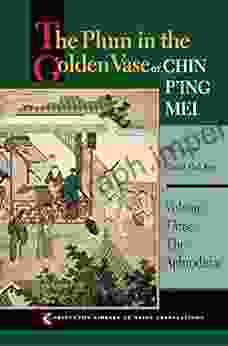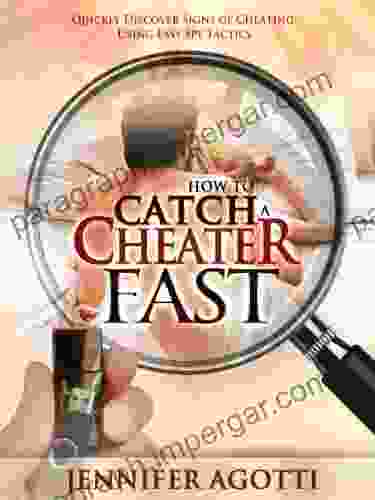Experience Ecosystem Ontology Task And Method: The Ultimate Guide to Designing Thriving Experience Ecosystems

In today's rapidly evolving digital landscape, organizations are facing unprecedented challenges in creating seamless and engaging experiences for their customers. To address these challenges, a new paradigm has emerged: the experience ecosystem.
An experience ecosystem is a complex and interconnected network of touchpoints that an organization provides to its customers. These touchpoints can include physical stores, online platforms, mobile apps, and even human interactions. By carefully designing and managing these touchpoints, organizations can create a cohesive and consistent experience that meets the needs of their customers and drives business success.
However, designing and managing experience ecosystems is no easy task. It requires a deep understanding of the customer journey and the ability to create experiences that are both meaningful and memorable. This is where the Experience Ecosystem Ontology Task And Method comes in.
What is the Experience Ecosystem Ontology Task And Method?
The Experience Ecosystem Ontology Task And Method is a comprehensive framework for designing, implementing, and evaluating experience ecosystems. It provides organizations with a clear understanding of the ontological foundations of experience ecosystems and the tasks and methods that are necessary to create successful ones.
The framework is based on the following key principles:
- Experience ecosystems are complex systems. They involve multiple touchpoints, stakeholders, and processes. As such, it is important to take a holistic approach to their design and management.
- Experience ecosystems are dynamic. They constantly evolve as new technologies and customer expectations emerge. As such, it is important to adopt an agile approach to their design and management.
- Experience ecosystems are unique to each organization. There is no one-size-fits-all approach to their design and management. Organizations need to tailor their approach to their specific business needs and customer base.
The Experience Ecosystem Ontology Task And Method Framework
The Experience Ecosystem Ontology Task And Method framework consists of three main components:
- The Ontology Task: This task involves defining the ontological foundations of the experience ecosystem. This includes identifying the key concepts, relationships, and axioms that govern the ecosystem.
- The Method: This task involves developing the methods and techniques that are necessary to design, implement, and evaluate experience ecosystems. This includes identifying the key stakeholders, processes, and technologies that are involved.
- The Evaluation: This task involves assessing the effectiveness of the experience ecosystem. This includes measuring the impact of the ecosystem on customer satisfaction, brand loyalty, and business outcomes.
Benefits of Using the Experience Ecosystem Ontology Task And Method
Organizations that use the Experience Ecosystem Ontology Task And Method framework can benefit from a number of advantages, including:
- Improved customer experience: By taking a holistic approach to experience design, organizations can create experiences that are more seamless, engaging, and memorable.
- Increased customer satisfaction: By meeting the needs of customers across all touchpoints, organizations can increase customer satisfaction and loyalty.
- Increased brand loyalty: By creating a consistent and positive brand experience, organizations can build stronger relationships with their customers.
- Improved business outcomes: By driving customer satisfaction and loyalty, organizations can improve their business outcomes, such as sales, revenue, and profitability.
The Experience Ecosystem Ontology Task And Method is a powerful framework that can help organizations create thriving experience ecosystems. By following the principles and steps outlined in this framework, organizations can design, implement, and evaluate experience ecosystems that meet the needs of their customers and drive business success.
To learn more about the Experience Ecosystem Ontology Task And Method, Free Download your copy of the book today.
Free Download Now
Do you want to contribute by writing guest posts on this blog?
Please contact us and send us a resume of previous articles that you have written.
 Book
Book Novel
Novel Page
Page Chapter
Chapter Text
Text Story
Story Genre
Genre Reader
Reader Library
Library Paperback
Paperback E-book
E-book Magazine
Magazine Newspaper
Newspaper Paragraph
Paragraph Sentence
Sentence Bookmark
Bookmark Shelf
Shelf Glossary
Glossary Bibliography
Bibliography Foreword
Foreword Preface
Preface Synopsis
Synopsis Annotation
Annotation Footnote
Footnote Manuscript
Manuscript Scroll
Scroll Codex
Codex Tome
Tome Bestseller
Bestseller Classics
Classics Library card
Library card Narrative
Narrative Biography
Biography Autobiography
Autobiography Memoir
Memoir Reference
Reference Encyclopedia
Encyclopedia Jeff Rubens
Jeff Rubens Jennifer Simonetti Bryan
Jennifer Simonetti Bryan Joan M Farrell
Joan M Farrell Jerry Nickle
Jerry Nickle Joan Druett
Joan Druett Jennifer Eastman Attebery
Jennifer Eastman Attebery Jennifer Cockrall King
Jennifer Cockrall King Jeffrey Leiken
Jeffrey Leiken Joe Pettitt
Joe Pettitt Jens Waschke
Jens Waschke Jeffrey W Hancks
Jeffrey W Hancks John Bierhorst
John Bierhorst Jeffery Dawson
Jeffery Dawson Jiri Benovsky
Jiri Benovsky Jeffery A Hogge
Jeffery A Hogge Jeffrey Metzger
Jeffrey Metzger Jennet Conant
Jennet Conant Jessie Morgan Owens
Jessie Morgan Owens Jerrold M Packard
Jerrold M Packard Jeffrey R Yost
Jeffrey R Yost
Light bulbAdvertise smarter! Our strategic ad space ensures maximum exposure. Reserve your spot today!

 Brent FosterUnveiling the Enchanting World of "The Plum in the Golden Vase" Volume Three:...
Brent FosterUnveiling the Enchanting World of "The Plum in the Golden Vase" Volume Three:...
 Ralph EllisonHow to Catch a Cheater Fast: The Ultimate Guide to Exposing Infidelity and...
Ralph EllisonHow to Catch a Cheater Fast: The Ultimate Guide to Exposing Infidelity and... Leo TolstoyFollow ·19.1k
Leo TolstoyFollow ·19.1k Vladimir NabokovFollow ·2k
Vladimir NabokovFollow ·2k Tyrone PowellFollow ·4k
Tyrone PowellFollow ·4k Jonathan FranzenFollow ·8.3k
Jonathan FranzenFollow ·8.3k Hunter MitchellFollow ·2k
Hunter MitchellFollow ·2k Gage HayesFollow ·3.8k
Gage HayesFollow ·3.8k Wade CoxFollow ·18.7k
Wade CoxFollow ·18.7k Jaylen MitchellFollow ·9.3k
Jaylen MitchellFollow ·9.3k

 Christian Barnes
Christian BarnesUnleash Your Creativity: Build Interlocking 3D Animal and...
Discover the Art of Paper...

 Terry Bell
Terry BellUnveiling the Secrets of Winning: A Comprehensive Guide...
In the realm of chance and fortune, the...

 Albert Camus
Albert Camus101 Things That You Should Do Before Leaving The House In...
Starting your day right is...

 Anthony Burgess
Anthony BurgessForcing Move 2024 Volume: Unleash Your Inner Grandmaster
Embark on an extraordinary chess...












